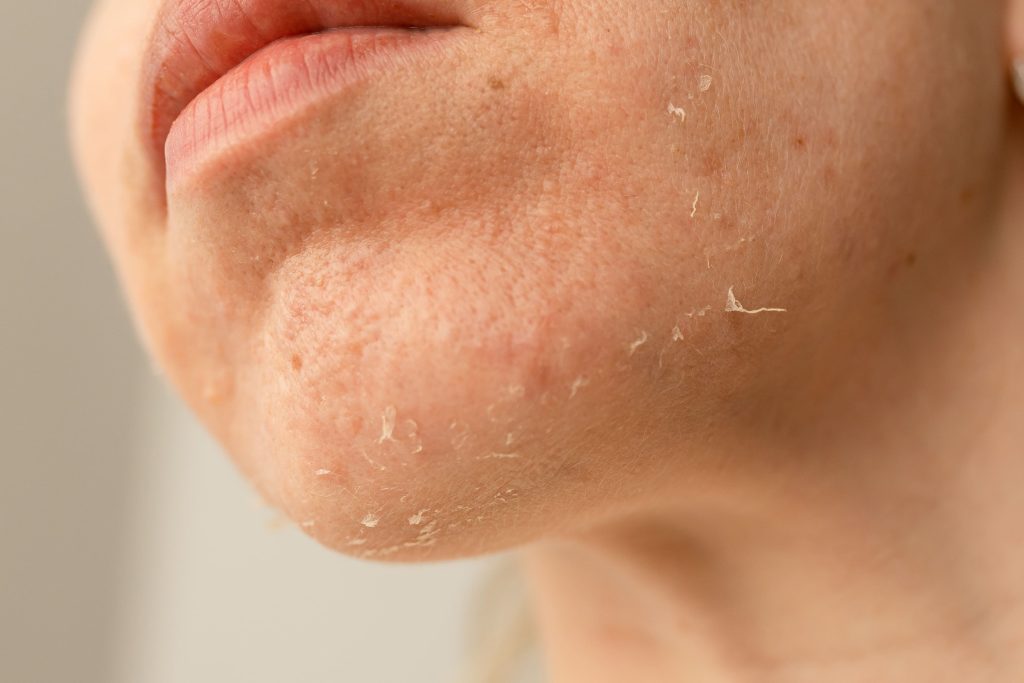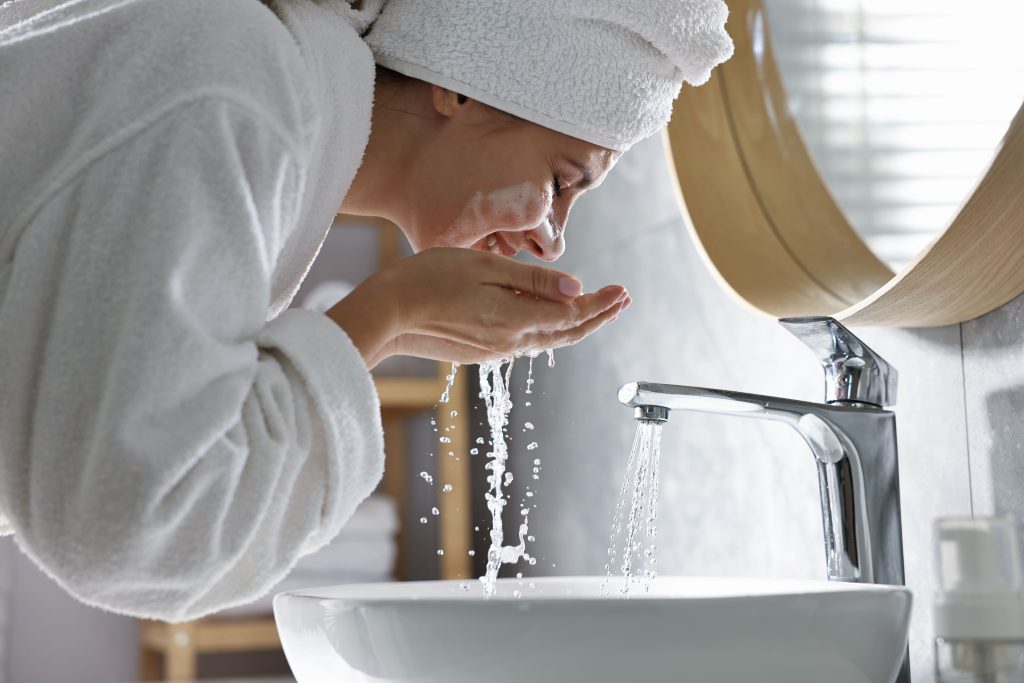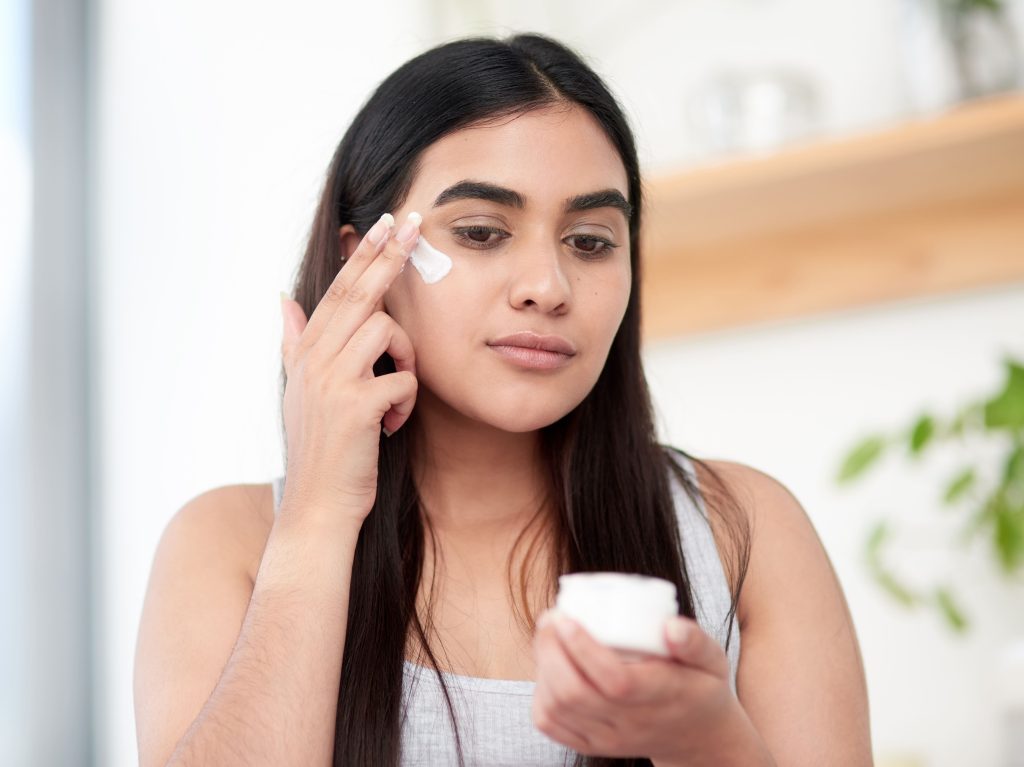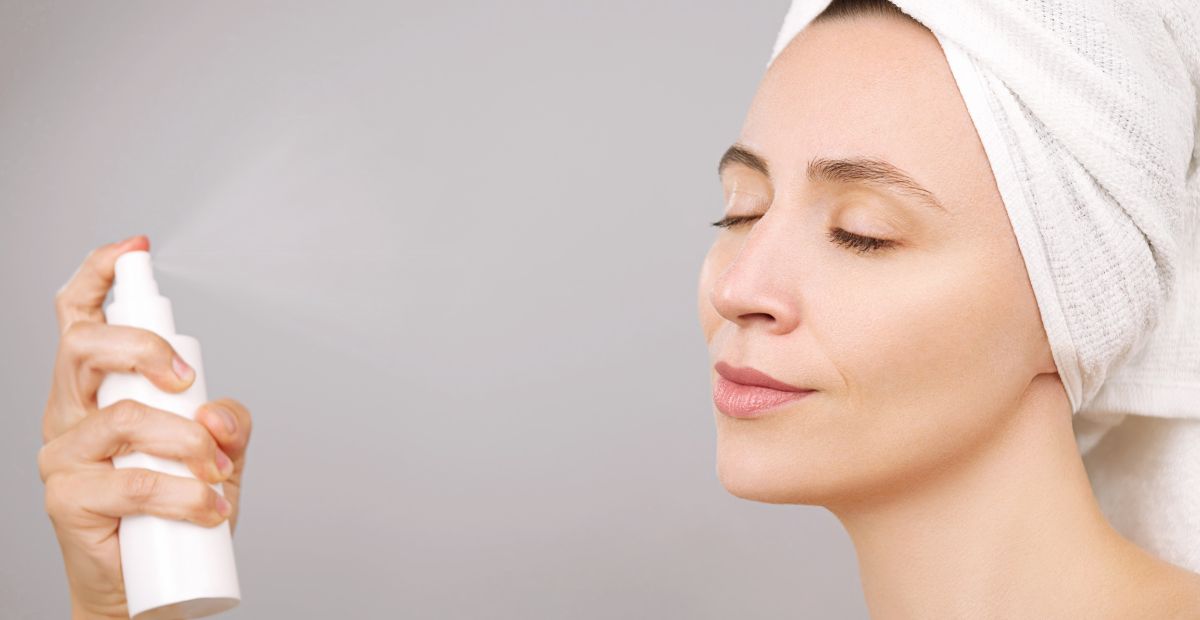How to Treat Dry Skin on Your Face Like a Pro
Onskin Content Team
Your guides through the skincare chaos

Have you ever sat in your dermatologist’s office and wondered what it would be like to switch places? Today, with a little help from us, you get that chance. Explore the causes of dry skin on the face and how to treat it like a true pro. Let’s get to work!
Know Your Enemy: What Is Dry Skin?
Whatever the issue is, it’s always important to understand what exactly you’re dealing with. Common symptoms of dry skin include scaling, flaking, or peeling, a rough texture, a feeling of tightness (especially after bathing), persistent itching, and cracks in the skin that may bleed. Diagnosed? Congratulations! You’re already one step closer to treating it.
By the way, the reason we’re stepping into the dermatologist’s role today isn’t occasional. Dry skin is a widespread issue that can affect anyone, regardless of age, gender, or skin type.
In fact, nearly half of those surveyed in Germany reported experiencing dry skin. In the Netherlands, the number was even higher–60%.

Figure Out What Causes Dry Skin on the Face
You’ve done well to confirm the diagnosis. The next step is to understand what’s causing it.
Well, at its core, the reason is quite obvious: lack of moisture. The thing is, the skin’s outer layer needs hydration to stay healthy. To help with this, tiny glands in the skin produce an oily substance called sebum. Sebum is made up of fatty acids, sugars, waxes, and other natural ingredients that form a protective barrier to slow down water loss. When there isn’t enough sebum, the skin loses moisture and can become dry, cracked, and damaged.
But what causes sebum to decrease?
Aging
As we get older, our body produces fewer androgens, hormones that help control how much oil the sebaceous glands make. With fewer androgens, the glands produce less sebum, which leads to drier skin.
Inflammatory skin issues
Certain skin conditions like atopic dermatitis, allergic and irritant contact dermatitis, seborrheic dermatitis, dyshidrotic eczema, and psoriasis are also on the list.

Smoking
Smoking can weaken the skin’s natural protective barrier, making it more difficult to hold in moisture and eventually leading to increased water loss. At the same time, smoking reduces blood flow to the skin, which means it gets less oxygen and fewer nutrients. Together, these effects make the skin more likely to become dry, rough, and dull.
Certain medications
Retinoids, lipid-lowering agents, diuretics, calcium antagonists, antirheumatic drugs, cytostatic agents, beta blockers, and prolonged use of topical corticosteroids can all contribute to dry skin.
Environment
Sun damage and pollution can speed up the aging of oil glands. These harmful factors increase inflammation, cause damage, and can interfere with how the glands work, sometimes even causing their cells to change into the wrong type. As a result, the glands start to produce less oil.
Hot water
Spending too much time in hot water damages your skin’s protective barrier, making it harder to keep moisture in and easier for irritants and bacteria to penetrate. Plus, hot temperatures increase skin permeability and redness, making things worse.
By the way, cold water also affects the skin, but it’s not as harsh as hot water.
How to Get Rid of Dry Skin on the Face
So, you already know what dry skin is and what causes it. Now comes the most rewarding part of your dermatologist onboarding journey!
In general, to stay soft and healthy, your skin needs to maintain around 10–15% of water. These are several tips to help you do that:
#1. Choose lukewarm water instead of hot and avoid long, frequent showers. Science can’t tell you exactly how often you should take a shower–it depends on your lifestyle and circumstances. Just be reasonable.

#2. Apply moisturizer right after you wash your face. When you bathe, take a shower, or simply wash up, your skin absorbs water and becomes more hydrated, but that moisture can quickly evaporate. To prevent it, use a facial moisturizer afterwards. It acts as a protective barrier to keep the water in your skin.
These are several ingredients a good moisturizer should contain:
- Hyaluronic acid.
- Emollients.
- Lactic acid (up to 10% concentration).
- Ectoin.
- Urea (below 10% concentration).
- Aloe vera.
To be 100% sure a product suits your skin and issues, it’s always best to check it with the OnSkin app. It’ll analyze every ingredient in the formula and tell you whether it’s safe and effective for your skin condition. Just a picture of a product or its barcode is all it takes.
#3. Use gentle cleansers, as their acidic pH closely matches the skin’s natural pH. Traditional soaps, on the other hand, raise the skin’s pH, worsening dryness and itching.
#4. Apply SPF 30 or higher every time you go outside and avoid the most common sunscreen mistakes along the way. Your skin will thank you.

#5. Consider using a humidifier, especially during the heating season. Dry indoor air can pull moisture from your skin and leave it irritated. A humidifier can help you fight back.
The American Osteopathic College of Dermatology recommends keeping indoor temperatures between 68–75°F (20–24°C) with humidity levels around 45–55% for optimal comfort.
#6. Be careful with your diet. Try to avoid citrus fruits, very hot or spicy foods, and excessively hot drinks. Alcohol isn’t recommended either.
Pro Dermatologist’s Dry Skin Cheat Sheet
Spot the symptoms: Flaking, scaling, tightness, itching, or cracks.
Understand the cause: Most often, dry skin results from a lack of moisture and a weakened skin barrier.
Find triggers: Aging, inflammatory skin conditions, smoking, certain medications (retinoids, diuretics, beta blockers, etc.), environmental stress, and hot water exposure.
Set your treatment goals: Restore hydration, repair the skin barrier, and avoid further irritation.
Tips to reach these goals:
- Use lukewarm water and limit long showers.
- Apply moisturizer immediately after washing.
- Choose moisturizers with beneficial ingredients (hyaluronic acid, ectoin, emollients, urea (below 10%), lactic acid (up to 10%), or aloe vera.
- Use gentle cleansers that match your skin’s natural pH.
- Apply SPF 30 or higher every time you go outside.
- Use a humidifier during dry seasons to maintain 45–55% humidity.
- Watch your diet. Avoid alcohol, spicy or hot foods, citrus fruits, and excessive hot drinks.
FAQ
-
Where do I start with OnSkin?
Download the app and think of a product you’d like to know more about. Then, go to the main screen and choose how you’d like to get the info —by manually looking it up in the search bar, by scanning its barcode, or by simply taking a picture of the packaging. Once you’ve done any of these, you can see how safe the product is and if it suits your skin or hair (if this analysis is available).
-
What is Safety Rating, and how is it calculated?
In OnSkin, we base product rates on ingredients. Each is closely studied by our medical team and then evaluated. This way, each product gets a score from 0 to 100, with 100 as the safest level.
Safety Levels
- Excellent (76–100)
- Good (51–75)
- Not great (26–50)
- Bad (0–25)
These scores are backed by the latest scientific studies. You can find links to the resources we’ve used on each ingredient page. To assess the safety of product ingredients, we evaluate them according to the following parameters/criteria
- Endocrine disruption risk / Reproductive toxicity
Indicates the probability of mimicking, blocking, or interfering with the body hormones.
- Сarcinogenicity
Measures the potential risk of inducing cancer.
- Allergy risk
Estimates the probability of an allergic reaction.
- High concentration alert
Determines the risk of being unsafe in certain amounts.
-
What is Skin Match?
Based on the info you input about your skin type, age, skin care goal, and other “settings,” OnSkin checks how well a product is tailored to your unique skin needs — it’s basically like a dermatologist helping you find the right products, minus the fees and the long wait. The product you’re checking might be labeled as It’s a match!, Hit-or-miss, or Not a match for you. The app also detects ingredient groups such as Anti-acne, Anti-inflammatory, Moisturizes, May be drying, Comedogenic, and others — by tapping one, you see exactly what ingredients from this or that group are in the product.
-
I seem to have a problem with using the app. Who should I contact?
Please reach out to us at [email protected], and we’ll carefully look into your issue. Your ideas for improving the app are also very welcome!
-
Do you have an Android version?
Not yet! Hey Android users, we hear you, and we're thinking about making an Android version, but we haven't started the development yet.
Tracker Sent!
It’s on the way to your inbox.




